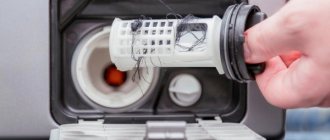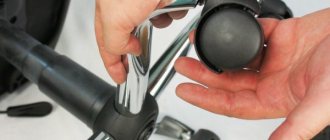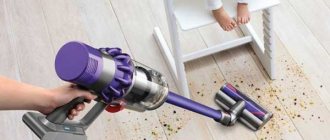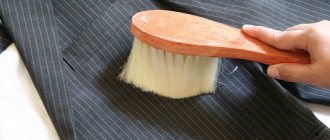A coffee machine is truly a wonderful invention because this device can make your morning truly good. This is especially true for those who cannot live without a cup of aromatic drink and day.
The device saves a person from the hassle of preparing an invigorating drink, but regular use of the device requires the same regular care.
When is it necessary to carry out procedures?
The period for cleaning the device directly depends on the degree of hardness of the water you use for preparing drinks. As a rule, most modern devices have factory settings designed for the use of medium-hard liquids when operating the device.
ADVICE! Recommendations from the manufacturer of the unit regarding the timing of cleaning are indicated in the operating instructions for the device and, most often, after every 250-300 cups of coffee prepared by the machine, descaling of the device is required.
However, such cleaning periods can be called conditional : the rate of formation of mineral and lime deposits on the internal elements of the unit also depends on many other external factors that cannot be taken into account by the manufacturer.
Do you use your coffee machine often?
Not really
How do you know when it's time to descale?
To know exactly when your machine needs descaling, first determine the hardness level of the water you use.
The easiest way to find out the value of the indicator is to use special test strips that come with the device:
- pour water into a small container;
- lower the test into the liquid for 1 second, remove it and place it on a horizontal surface;
- after 1 minute, evaluate the result: see how many squares have changed color and compare the data with the table.
| Number of elements that changed color | Water hardness indicator |
| 1 square | Very soft |
| 2 squares | Soft |
| 3 square | Tough |
| 4 square | Very tough |
In accordance with the result obtained, you can adjust the settings of your coffee machine by setting the required level of hardness.
If your device is not equipped with either special indicators signaling the need for cleaning or self-cleaning functions, you can conclude that the device is dirty based on the following signs :
- the sound of the machine running has become louder, the process of making coffee is accompanied by crackling and other extraneous noises;
- the drinks have an unpleasant, bitter taste, sediment remains at the bottom of the cup;
- the time to prepare a portion of coffee has increased;
- the drink comes out into the cup slowly, in a very thin stream.
IMPORTANT! If you use very soft or soft water to fill the machine, you need to clean the device at least once every 3 months; if you use a medium-hard liquid, decalcify it once every 1-2 months.
Using water with high hardness for preparing drinks requires descaling the appliance at least 2 times a month.
How to clean a carob coffee maker?
In devices of this type, instead of the usual filters present in other types of coffee machines, a plastic or metal horn is used - a holder , resembling a small sieve with a handle.
Ground beans or coffee pods are placed in a horn and fixed in the connector of the brewing unit. Water turns into a wonderful, aromatic drink, passing under high pressure through coffee pressed in a holder.
Carob machines can be equipped with a removable or built-in brewing unit.
Procedure for descaling a removable group:
- remove the block;
- rinse it thoroughly with running water, without adding chemicals;
- Leave the device outdoors until it is completely dry, then return it to its original location.
REFERENCE! The removable unit must be cleaned at least once every 1-2 weeks.
It is possible to remove scale in machines with a built-in cooking unit only by using special cleaning tablets.
Removing dirt from the cappuccino maker
- Prepare a solution, stir until the acid is completely dissolved.
- Fill the reservoir up to the mark indicating the maximum amount of liquid possible.
- Insert the container with the solution into the coffee machine and carry out the cleaning procedure, following the instructions. If your equipment does not have an automatic cleaning function, pour in the solution, wait a quarter of an hour, turn on the device by selecting the “coffee preparation” function.
- Turn off, remove the reservoir, pour out the remaining solution, rinse.
The more bends and smaller the diameter of the tubes for the passage of water in the coffee maker, the greater the likelihood of scale formation. Lime scale particles clog water flow channels.
You can also use special anti-scale tablets to descale your Nespresso coffee machine:
Untimely descaling of devices can lead to many troubles and problems:
- When the device is turned on, the housing may leak.
- When preparing coffee, the flow of water is blocked.
- When the “steam” program is activated, scale comes out of the tube.
- The pump is very loud.
- The device completely fails.
That’s why it’s worth cleaning your Delonghi coffee machine in a timely manner. To clean their products, the manufacturer recommends using products made from biodegradable EcoDecalc components. It is available in 0.5 liter bottles - one such container is enough for four complete washing cycles of the device to completely clean the DeLonghi coffee machine from scale.
- Pour 1 liter of water at approximately 60° C, add 250 ml of cleaning agent.
- To clean the DeLonghi coffee machine, turn on the coffee machine.
- Pour approximately 250 ml of the resulting solution through the hot water supply tube.
- Turn off the machine so that the hot water control lever remains open.
- Repeat this on/off switch three times to completely clean the Delonghi coffee machine.
- Close the hot water supply valve, set a program for preparing 2-3 mugs of the drink “idle” - to clean the internal systems.
- Rinse the water container and repeat decalcification, but without adding cleaning liquid.
- Remove the brewing unit to rinse it with warm water.
How to clean a DeLonghi magnifica coffee machine? You can follow the same algorithm.
Special means
The water hardness level is different everywhere. Based on its value, the duration of the device’s operating cycle between cleaning procedures is set. The harder the water, the fewer cups of coffee can be prepared in this time interval.
Expert opinion
Ekaterina Korneva, expert in the field of care, cleanliness and beauty
I will help you understand all the intricacies.
Water turns into a wonderful, aromatic drink, passing under high pressure through coffee pressed in a holder. After completing the first 6 points of the algorithm described above for manual mode, you need to enable the Auto Cleaning function. How to clean a carob coffee maker? For any questions, please contact me, I will be happy to answer!
How to wash a capsule, geyser and other type model?
The design of a geyser coffee machine is quite simple: the device consists of two compartments - a lower compartment for water and an upper part where ground coffee is poured. The top compartment has a metal filter that prevents sediment from getting into the finished drink.
Household appliances of this type are completely disassembled, making cleaning them easy. In addition to removing scale from both containers of the unit, be sure to wash the metal filter.
The tray and container for coffee in capsule machines can also be easily washed with running water with the addition of a small amount of chemically neutral detergents.
Cleaning of any other types of units (drip type, French press) follows a similar principle:
- provided that the tray and brewing unit are removable, the elements are washed every 7-14 days in running water;
- machines with non-removable functional units are cleaned using special tablets or liquids.
What is decalcification of a coffee machine
Hard water contains large amounts of calcium salts. They form a loose film on the walls of the coffee machine, which attaches to itself the salts of other metals contained in the water. Decalcification is the process of removing salt deposits.
Mechanical descaling using cleaning pastes containing abrasive particles causes serious damage to the elements of the coffee machine and can lead to serious damage. Therefore, to decalcify and clean coffee machines from coffee oils, special compositions are used that contain substances that soften and remove the scale layer.
Coffee beans contain vegetable oil, which turns into liquid form when heated . After cooling, drops of oil become thicker and accumulate on the internal elements of the coffee machine. Over time, like any other oil, it becomes rancid, giving the coffee an unpleasant taste.
The most incredible way to get my hair back!
This is just a DISASTER ! And after all, my hair did not start falling out in one day, but systematically - day after day I watched how the hair left my head: while combing, washing, even while sleeping. (read more…)
Cleaning the milk circuit of milk machines
The most “capricious” element of a coffee machine is the cappuccino maker . Milk or cream used to prepare the drink leaves a greasy residue on the walls of this part, which, when accumulated, can lead to clogging of the milk product supply hose.
In addition, such plaque is a favorable environment for the life of many pathogenic bacteria.
The main rule for caring for a cappuccino maker is to clean it regularly, at least once every 2-4 days.
System cleaning procedure:
- fill the milk container with clean water;
- turn on the machine, set the hot foam preparation mode;
- Repeat the cycle until clear liquid comes out of the cappuccino maker.
Rinse the steamer tube with running water after each milk emulsification.
REFERENCE! If for some reason you skipped cleaning the device and the milk system is clogged, during the procedure add a means for washing cappuccino makers - a special liquid for steamers, pressed tablets for milk units - into a container of water.
After using chemical compounds, be sure to “run” the steamer several times, pouring clean water into the tank.
Clean mechanical devices (pannarello nozzle, manual cappuccino makers) after each use in clean water or with the addition of liquid dishwashing detergent.
What products should not be used to clean
Bleach is not suitable for cleaning coffee makers. The walls of the apparatus will be cleaned, but aggressive components will settle on them: sodium hypochlorite, sodium carboxymethylcellulose. They cannot be eliminated even if you wash the device parts with water.
Don't use soap. The product reacts with coffee oils, so the drink takes on a soapy taste.
Expert opinion
Vadim Kudryavtsev
Coffee expert, professional barista and simply in love with this aromatic drink.
Ask the barista a question
Do not mix store-bought and folk cleaning products. Their components will react with each other, ruin the parts and disable the device.
Be sure to run water after using cleaning products. Brew at least 3 cups of coffee.
You should not drink coffee immediately after the procedure, as it contains impurities of cleaning products.
How to get rid of scale?
Auto cleanup
The automatic decalcification program should be carried out regularly, at least 2 times a month, if possible 1 time a week.
Procedure:
- remove any remaining coffee from the grinder and tray;
- fill the unit’s reservoir with hot water (to the maximum mark);
- place the selected cleaning agent in the liquid;
- turn on the automatic cleaning function, wait until the cycle completes;
- Fill the tank with clean water and turn on the coffee preparation mode. Repeat the rinsing procedure 2-3 more times;
- the machine is ready for further use.
IMPORTANT! Pour out the first cup of coffee prepared after decalcification. The following portions of the drink are suitable for consumption.
Special means
Preparations intended for descaling can be in liquid form or in tablets . Almost every coffee machine manufacturer offers its own products for cleaning units.
Using just such branded drugs will be the most effective and safe for your car model.
There are also universal preparations that can be used in coffee machines of any brand - Topper, Top House . All products should be prepared for the upcoming procedure in accordance with the instructions attached to them.
IMPORTANT! It is prohibited to change the dosage of products recommended by the manufacturer of the cleaning product, as this can cause irreparable damage to both human health and household appliances.
Cleaning tablets
All tablets for cleaning coffee machines are divided into two groups:
- for descaling;
- to remove deposits of coffee oils.
The drugs are not interchangeable : if you need to remove salt deposits from the hydraulic system, use only decalcifying agents; tablets for removing oil deposits will be useless in this case.
To carry out the procedure, dissolve 1 tablet in water (the exact proportions of the components are indicated on the product packaging), fill the unit’s reservoir with the resulting liquid, and turn on the coffee preparation mode.
Lemon acid
Citric acid is one of the most popular, effective and safe for human health improvised means used to remove scale from the surfaces of various household devices.
How to clean the coffee machine:
- disconnect the device from the power supply;
- remove the water container, clean it thoroughly with dishwashing detergent, and rinse under running water;
- make a solution of citric acid, at the rate of 15 g of acidic powder per 1 liter of water, fill the reservoir with liquid;
- turn on the device, set the coffee preparation mode;
- There should be enough cycles of operation of the unit so that the entire acid solution is completely consumed;
- Upon completion of cleaning, remove the container again, rinse it thoroughly, fill it with clean water and run 2-3 cycles of preparing the drink.
IMPORTANT! Regardless of the degree of contamination of your machine, it is unacceptable to exceed the specified dosage of acid to prepare the cleaning solution.
Cleaning the filter
Most coffee making devices are equipped with filters, either disposable or reusable. If the filter is disposable, if it gets dirty, simply replace it with a new one .
To clean a reusable element, in most cases, simply rinsing the part with warm water and some detergent is sufficient.
If this method does not help get rid of plaque, try the following method:
- make a solution of citric acid (5 tablespoons of the product per 1 liter of water);
- place the filter in the solution for an hour;
- After the specified time has elapsed, remove the part from the liquid, rinse with a brush in hot water, dry and place in its original place.
REFERENCE! Instead of citric acid, you can use table vinegar. Dilute the product with water in equal proportions.
Why rinse?
Limescale, accumulating inside the tanks and on the heating elements of the device in contact with water, forms a “fur coat” on the machine components, which creates thermal resistance and significantly impairs the thermal conductivity of the metal.
This undesirable thermal insulation leads to additional load on the electric heater, an increase in the amount of time required to prepare coffee, corrosion of the device elements and wear of parts.
Read step-by-step instructions on how to clean your coffee machine yourself.
A piece of scale that has formed can break off and damage the machine by blocking the liquid injection system into the coffee.
It should be remembered that in addition to premature breakdown of the unit, deposits of hardness salts can also be harmful to human health : plaque has a porous structure and is a favorable environment for the habitat and reproduction of many bacteria, including pathogens.
Cleaning other parts
Not only the above-mentioned functional elements of the coffee maker require regular cleaning: the device can operate normally only if all its components are clean.
Compartment for pulp
This compartment is designed to collect used coffee . If the settings are correctly set and the machine is in good working order, the cake comes out into the container in the form of a clearly formed tablet.
To clean the compartment, simply remove it (the device must be turned on), throw away the accumulated debris, and thoroughly rinse the element with warm water. Before installing it in its original place, dry the part thoroughly.
IMPORTANT! If you remove the waste container after turning off the device, the coffee cycle counter will reset the existing readings, and the machine will “signal” about the need for cleaning when the compartment is full.
This situation will lead to clogging of the brewing unit and other internal components of the device.
Have you cleaned your coffee maker before?
Not really
Coffee grinder
The quality of the drink also depends on the condition of the coffee grinder : during the grinding process, particles of beans remain between the teeth of the millstones.
As a result of exposure to high temperatures, they stick together, gradually accumulating and forming a dense oily coating, which significantly distorts the taste of the prepared coffee.
Millstones are cleaned using special powders or tablets. Carry out the procedure after every 3-4 kg of ground grains.
Regardless of the type, all millstones are cleaned according to a similar principle:
- remove any remaining coffee from the hopper;
- turn on the grinding (until all remaining grain particles are completely removed), turn off the mode;
- pour 1 sachet of powder into the hopper or place a tablet in it;
- The cleaning compound must pass through the millstones. To do this, turn on the grinding again for 6 seconds;
- fill the container with beans, prepare 2-4 servings of coffee, pour them out.
The procedure is completed and you can enjoy a cup of aromatic drink.
How to remove the body, tray and container?
Wipe the machine body regularly with a slightly damp sponge, then with a dry, soft cloth - this will ensure that your device is completely free of dust and dirty stains.
It is extremely important to periodically drain the water accumulated in the pan - otherwise an unpleasant odor will appear in the device or mold will grow.
ADVICE! At least once every 2-3 weeks, wash this element of the machine with a neutral detergent in running water.
The tray can also be placed in the dishwasher and cleaned in this way (the processing temperature should not exceed 60 ⁰C). The tray can only be put back in place after it has been dried beforehand.
Some tips for use
Frequency of getting rid of coffee oils
A household appliance with an automatic cleaning function will notify you of the need to perform a procedure to remove oil deposits. All you have to do is simply put the cleaning tablet into the ground coffee hopper and start the unit’s operating cycle.
If you have an old-style device that does not have such a compartment, remove the brewing unit and place the tablet in the funnel into which the ground coffee is poured.
REFERENCE! Oils contained in grains clog the functional elements of the machine, so do not wait for the sensors to notify you that it is time to clean the device - carry out the procedure at least once every 2-3 months.
Care every day
Daily maintenance of your coffee machine includes the following:
- emptying and washing trays for liquid and coffee waste with running water;
- thoroughly rinsing the water tank;
- if you have a cappuccino maker, clean this element;
- wiping the device body with a damp, soft cloth.
Care every week
Weekly care of household appliances involves automatically cleaning the machine every 7 days using tablets or cleaning powders. Also, at least once a week, do not forget to remove and wash the brewing unit .
Proper and timely cleaning of your coffee machine will save you from the need for expensive repairs of the household appliance and will prevent your mood from being ruined in the morning by bitter, tasteless coffee.
Observe the proportions and prepare the solution
To prepare the cleaning product, prepare water (the amount of liquid depends on the specific model of the machine; information about this can be found in the instructions for the household appliance) and citric acid.
Heat the water to room temperature, then add the sour powder into it and stir it thoroughly.
The same solution is suitable for cleaning a dishwasher with citric acid.











